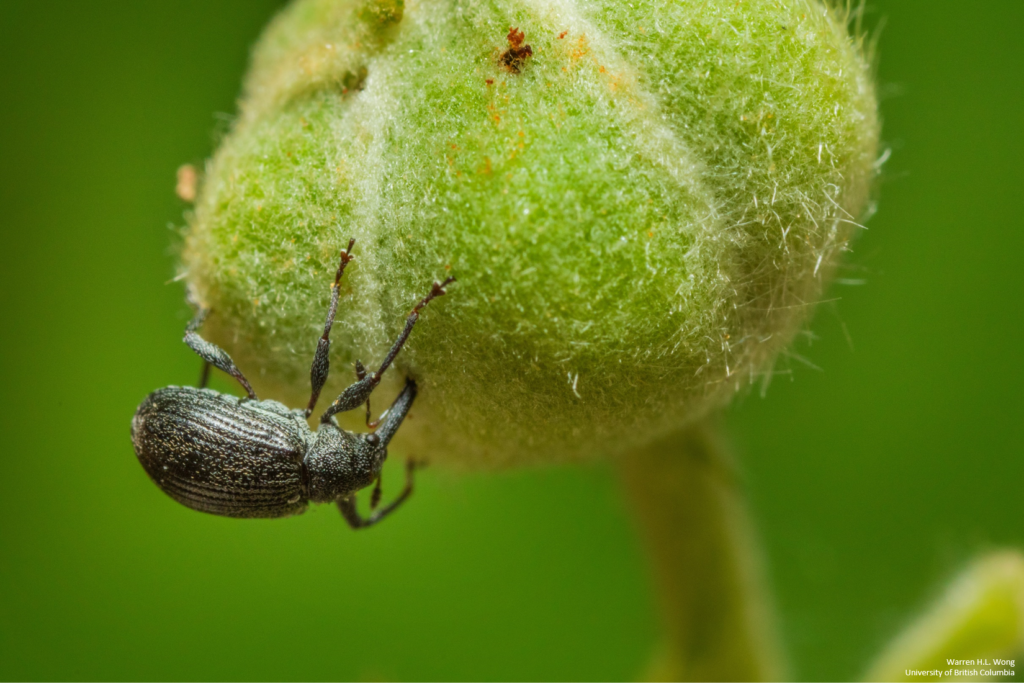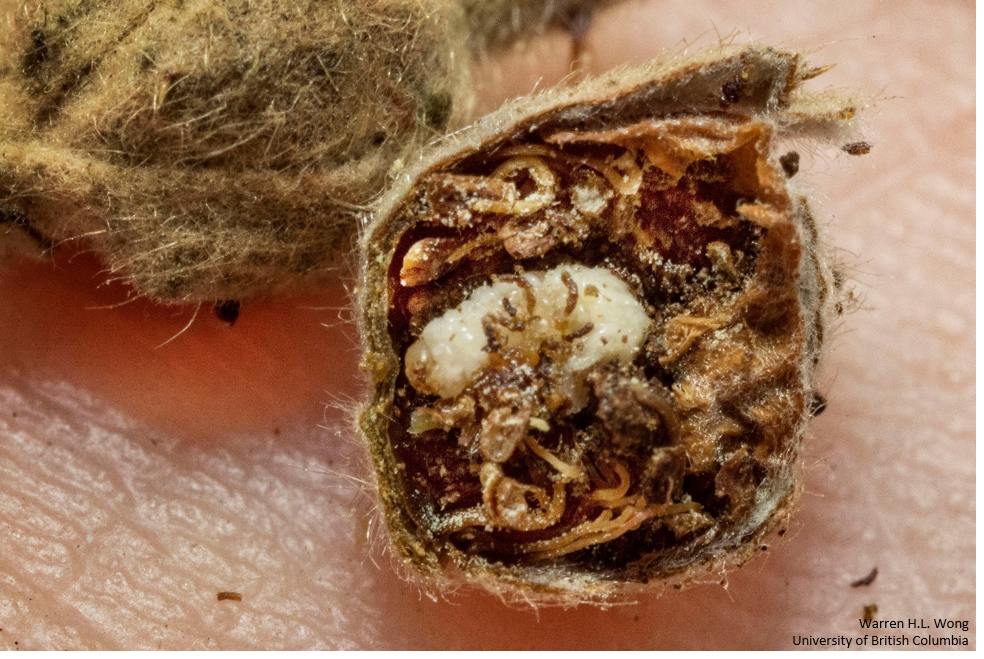Strawberry blossom weevil (Anthonomus rubi), a recent invader of the Fraser Valley of British Columbia (BC), has been busy clipping buds this spring in strawberry and raspberry fields. This weevil was first spotted in raspberries in Abbotsford, BC in 2019. Native to Europe, Asia, and parts of North Africa, this weevil is now established in the Fraser Valley of BC and northwestern Washington state. It has not yet been found in the prairie provinces.
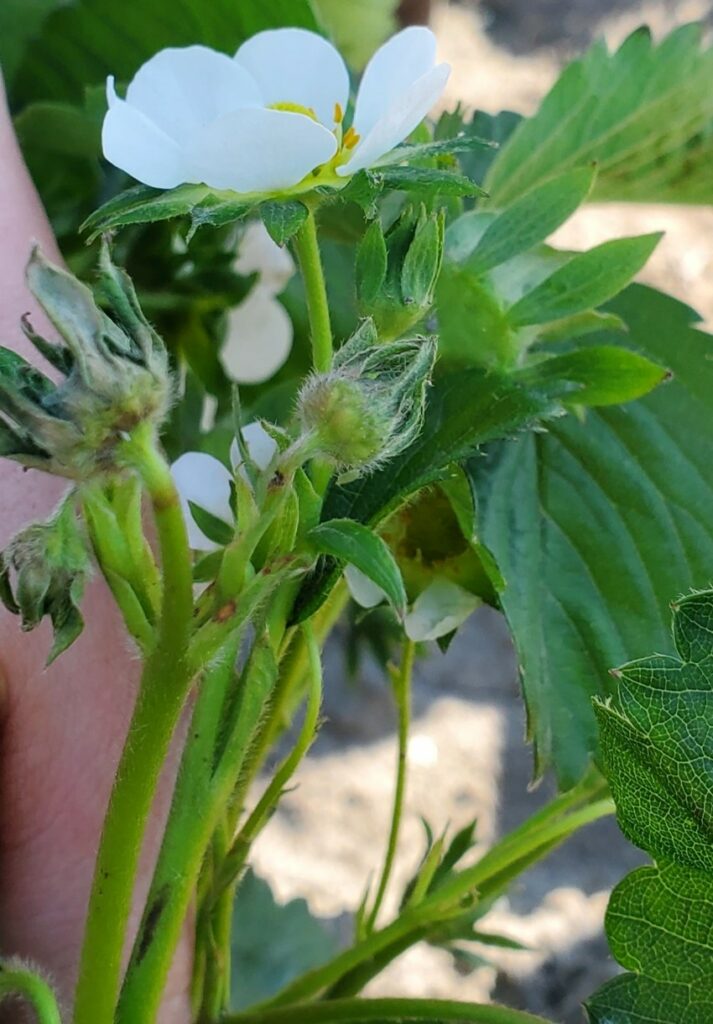
Different from many of the nocturnal root feeding weevils that damage roots and stunt plant growth in berries, strawberry blossom weevil is active during the day. It is small (2-3 mm long) with a small white patch of scales on the scutellum (back) and a long slender rostrum (snout). The female weevil is the main source of damage, as she deposits her eggs inside of green developing buds. She first chews a hole in the bud and then turns around and lays an egg inside, after which she clips the stem below.
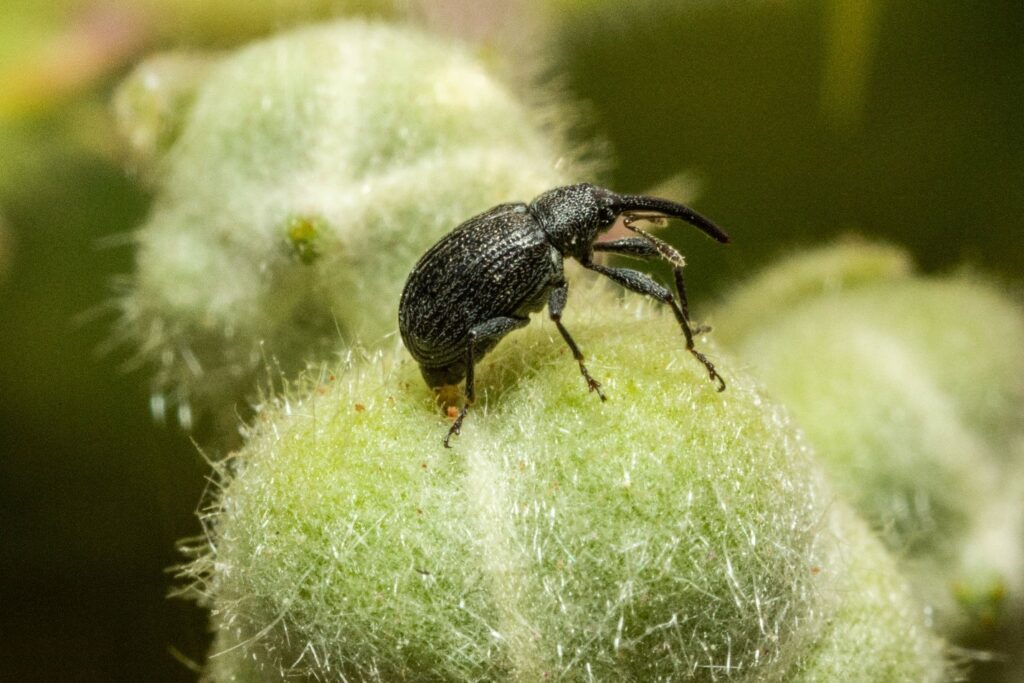
Typically a single c-shaped larvae develops inside of a bud. The larvae then pupates and the adult weevil emerges from the bud by chewing an exit hole.
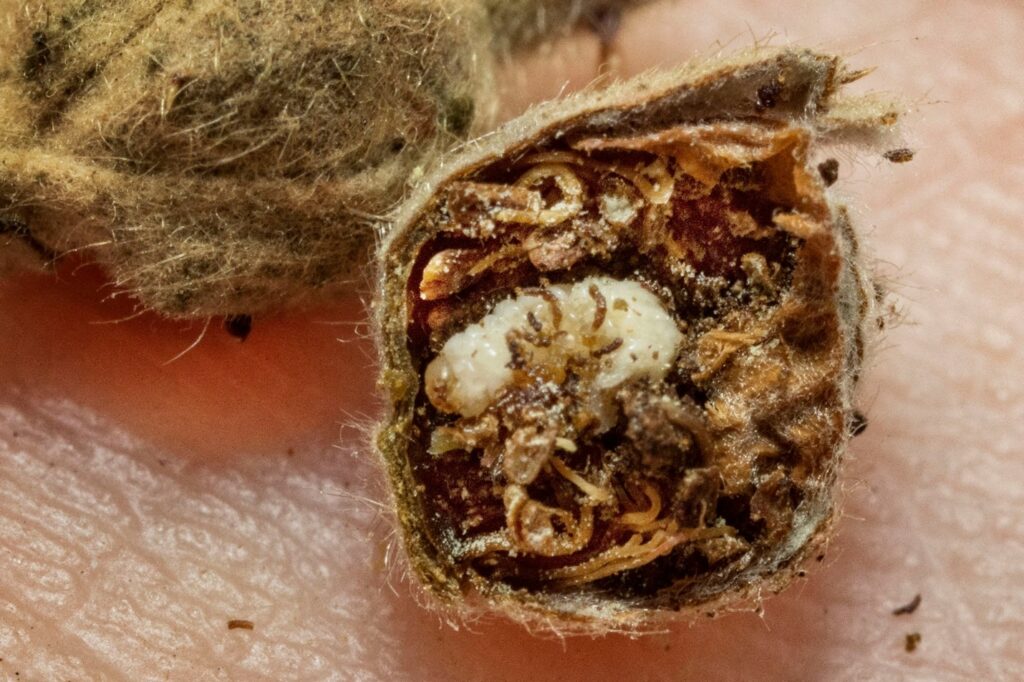
We are currently investigating the impact of this new weevil on strawberry and raspberry crops in the Fraser Valley of BC. Reports from its native range in Europe indicate that bud losses associated with strawberry blossom weevil range widely from 5 to 90% and yield losses over 60% have been reported. Despite the name, strawberry blossom weevil uses a wide range of host plants in the family Rosaceae – including the invasive Himalayan blackberry and ornamental plants such as rose and potentilla. The United States Department of Agriculture Animal and Plant Health Inspection Service (APHIS) put a Federal Order in place in September 2021 and continues to require a phytosanitary certificate to move Fragaria, Rubus, and Rosa plants from Canada into the USA (Federal Order DA-2021-25).
We need your help surveying for this pest! Although strawberry blossom weevil has not been detected beyond the Fraser Valley of BC, we are continuing a nation-wide survey in summer 2023 for this pest. Adult weevils naturally drop when disturbed so they can be detected by a method called beat sampling – where plants are tapped from above and weevils are collected into a tray below. Like many other insects, they are also attracted to the colour yellow and can be collected on yellow sticky cards. Visual surveys for damaged buds with severed stems can also be useful when searching for strawberry blossom weevil. In collaboration with Agriculture and Agri-Food Canada’s Geomatics Team we have developed a Story Map for Strawberry Blossom Weevil to summarize our survey efforts thus far.
If you see a weevil you suspect to be strawberry blossom weevil, snap a picture and submit it to our iNaturalist project (Anthonomus rubi in North America · iNaturalist).
For more information, check out factsheets prepared by the Invasive Species Council of BC, the CFIA, and the province of BC.

